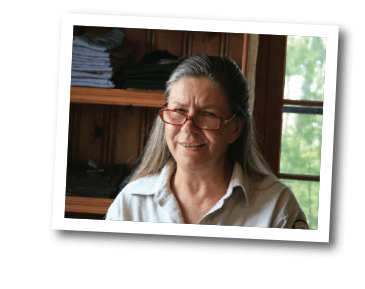
When Janice Matichuk accepted the position of Interior Park Ranger for Quetico Provincial Park in 1985, her daughter was five months old. The Cache Bay Ranger Station where she was posted lay 1,000 miles away from the log home she and her husband were building in eastern Ontario. Uprooting for the seasonal job would mean being a 16 kilometer motorboat ride and a six-hour drive from Atikokan, and living in near isolation with an infant. But the young couple gave it a go. They packed up the baby, the family dog, and 2,000 pounds of gear—including a diaper pail, a crib, a high chair and four months of canned goods and frozen foods—and moved into a small island cabin on Cache Bay. “We had no idea what we were getting into,” Janice remembers.
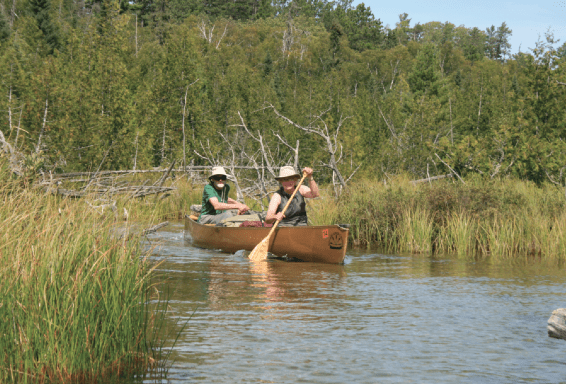
A plane delivered dairy, bakery and fresh vegetables twice a month. Janice called in her grocery list a week in advance, and once the plane delivered their food, she had to make it last two full weeks. All the while, she balanced raising an infant with issuing permits and teaching visitors how to respect the wilderness. But something about the lifestyle clicked. In 1988, Janice had a second child, and each of her kids spent 16 summers on the island. And for 17 years Janice, her children and pets did the 1,000 mile trek to Atikokan in early May and then back home in mid September to get the kids in school. Even after she and her husband separated in 1997, Janice continued to work as a ranger. Last summer was her 28th year on the job. She goes there alone now since her children are grown, and Janice is the longest serving interior ranger in the history of the park. She’s also the only ranger to stay at one station for so long.
“The island is just heaven on earth for me,” she says. “I like the challenge of the isolation and the challenge of living with the elements of nature and having to live with it as opposed to battle it.” Her experience has given her a unique window into the value of wilderness and the changing face of Quetico visitors.
The Job of a Ranger
Strictly speaking, Janice’s job is to make sure that campers understand the rules and regulations in the park, and that payment is in order. But she thinks of herself as more of an ambassador on the doorstep to the wilderness. She knows the Cache Bay area of Quetico intimately, and she takes it upon herself to teach its visitors a respect for the land and the consequences of making mistakes. She likes to chat with canoeists, even joke around to get a sense of their goals and tailor her speech to their needs.
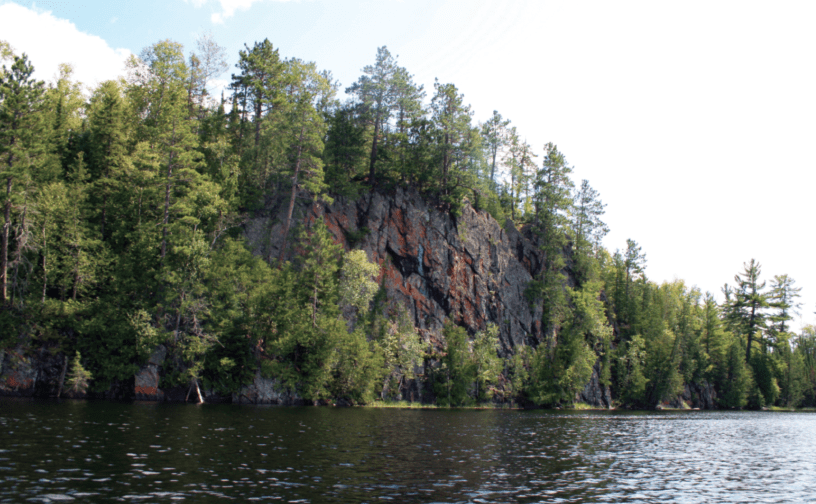
“If they have a lot on their minds about fishing, I really get onto them about respect for fish,” Janice says. “Reminding them of the limits, the basics about cleaning up, respect for the campsite. For new comers, I go in-depth.”
She pays close attention to their skill levels, and if unsuspecting canoeists are headed for the Falls Chain she sets them straight. Water levels can change dramatically along the chain of waterfalls, making portage landings hard to find and exposing inexperienced paddlers to strong currents. Janice has been known to steer beginners to other, safer routes because above all, she wants people to understand the power of nature.
“One of the things I’ve wanted to say and do say to a few people is, ‘Strip yourself down. Naked, no shoes either. Get bear butt naked and walk 100 steps from your campsite just through the bush. You will know in nanoseconds who is boss,” she says.
The Life of a Ranger
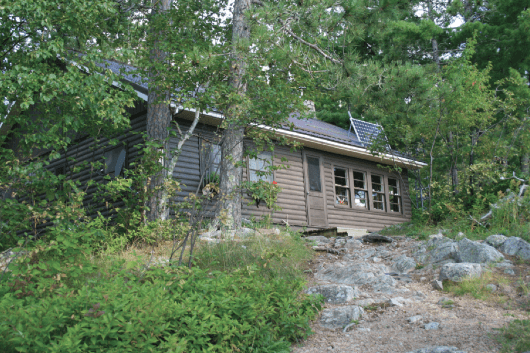
That power of nature is one of the things that Janice likes best about the life of an interior ranger. She rises to the challenge of being in charge of her own safety, and what appears to be a tiny cabin to most people feels like a castle to Janice. “The cabin was built in 1957, but I have running water, a tub, a propane stove and freezer, fridge, lights and outhouse. I now have internet on the island, required for permits and fish licenses, but I was hard pressed to use it,” she says.
For Janice, using the internet felt shameful. She prided herself on not having electricity, or a phone or even a computer. She liked the way it forced her and her children to engage with each other and play board games—even though they called them B-O-R-E-D games, she could see the way that wilderness had seeped into their bones.
“Thankfully when I felt like I was neglecting them by being so busy in my job, they were outside talking to campers and spouting off all kinds of stuff about the park. It was just a matter of fact to them that the loons would hatch in two weeks or there were moose on the island,” she says. They developed an intimate knowledge of the natural world, and Janice got to watch them grow and change even as the forest around her did the same. These days, with more time to herself, Janice likes to walk the perimeter of the island and observe how the trees have grown. She’s been known to put her arms around a tree and marvel at how it has changed since her arrival on the island, to grow weepy at the beauty of the land.
The Life of the Wilderness
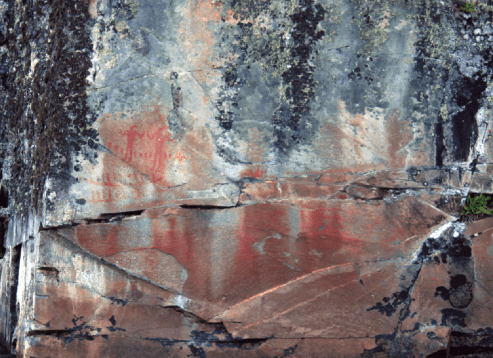
It’s the beauty of Quetico Provincial Park that Janice wants people to know first hand. She has watched as the face of the average visitor has changed. When she began her job, most people entering Quetico were 40 to 60 years old. Now, they’re in their 70s.
“I shake my head at them. I can’t even get off my mattress in the morning without moaning and groaning, and they’re getting up off rocks in the morning. I just admire them,” she says.
She calls them lifers, and she urges them to bring their children and grandchildren the next time they come. She knows from a park survey that usage of the park has gone down, and most of its visitors are returning visitors. They come every summer, occasionally getting the itch to travel somewhere else but always finding their way back to Quetico. Janice worries that politicians and bureaucrats will look at the declining numbers and decide that the value of wilderness has diminished. When she received a medal of valor for helping rescue five canoeists, she used her time at the podium to remind park officials of the park’s value, and the importance of having rangers on the ground.
“Nothing has changed on the land. It breathes and sighs with the water level,” she says. And in many ways, Janice does, too. She spends her winters volunteering and giving slideshows about raising kids in nontraditional environments, but it is the ranger station and the island on Cache Bay that she dreams about. “I’m so defined by Cache Bay I don’t know who Janice is without Cache Bay. I can’t put into words my love for that spot on the earth. When I come around Cache Point on Saganaga Lake and see my island, I just pass through a magic curtain.”
In the Words of a Quetico Ranger
Janice Matichuk is about to begin her 29th year as an interior park ranger for Quetico Provinical Park. Stationed at the Cache Bay Ranger Station on Saganaga Lake, she has a unique take on life lived on the edge of wilderness.
On loving her job and home: I’ve been at the Cache Bay Ranger Station for more than half of the cabin’s life! (although there have been two other ranger stations since 1915) My job as an interior station ranger is a fine fit for me. I love the job with a passion, it’s as vital to me as breathing. I can’t imagine my life without Cache Bay.
On being the first line of support for canoeist in trouble:
I thought I would remember all the canoe rescues I’ve done. Not! People continually remind me of their brushes with wind and waves that caused them to be topsy turvy in the frothy water of Sag or Cache Bay. For many campers returning to Quetico each year is a must-do. I’ve learned that several have a Quetico scrapbook! They remember everything because that one trip each year is such an important part of their life.
“Remember when you had fourteen of us in your cabin?”…no.
“Remember when you saw us being driven by the waves past your island, and you came roaring up in your boat to help us?”…nope.
“Remember when you used your generator-run washing machine to wring out our sleeping bags and clothes?’…Ya I remember that one. I thought I was rather clever to think of using the washing machine instead of hand wringing the water out of the tent, sleeping bags and clothing.
At Cache Bay I used to see about 4,000 people a summer and had many rescues. Age and memory are challenging my recall! These days there are fewer campers, so fewer rescues. Because they are dedicated Cache Bay/Quetico campers, they’ve heard me say ‘stay put on Hook Island and come in the next day’ if the lake is rockin’ and rollin’. They know to be more cautious …as I say every orientation “better to be late for your tow than leave in a body bag.” Perhaps I am rather blunt but it gets the message across and the campers learn to have huge respect for the elements.
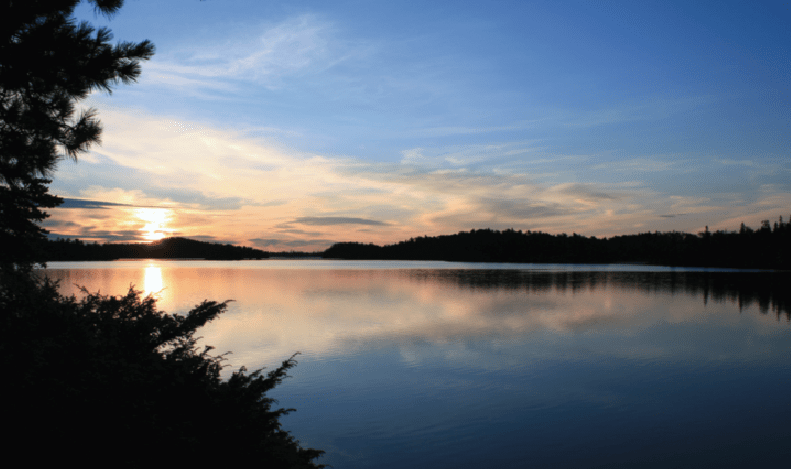
On the importance of introducing youth to the wilderness:
We are losing the youth. Most of the those canoeists I call “Lifers”—who will continue to marvel in the serenity of Quetico—were introduced to the outdoors by their parents. Society has caused a blip in that practice. Unless it’s off-the-wall, high-end extreme sports, the youth today aren’t too interested. Sad that. We need to treasure the natural world, respect it and protect it. Every once in a while it is so fun to see campers at my desk who were once little kids, now 10 years later coming to Quetico with their friends. So it can happen folks!
On visiting Quetico:
I find that there are a few patterns with the canoeing public. Those that will paddle every year to the same area to revisit old campsites, see how big the trees have grown and go to the favorite fishing hole (the one that no one else knows about). Those that want a circle route. Those that want new areas unexplored by themselves. Those that are now a tad tired and sore but still want the solitude of a Quetico experience so ask about one good campsite for the entire trip. We are all unique and can be delighted by many different campsites and lakes… What matters is that you get out there and plunk yourself in the bush. Breathe it, hear it, smell it, feel it, taste it, wander in it. You will get more mileage out of stories about your Quetico trip than you thought possible. And a good ranger can help you find the right route for you. I hope I see you at my desk in the bush, on the most beautiful island anywhere. Come to Cache Bay and say ‘hello, I read your article in Wilderness News and am going to give it a go.’
This article appeared in the Summer 2013 edition of Wilderness News >

